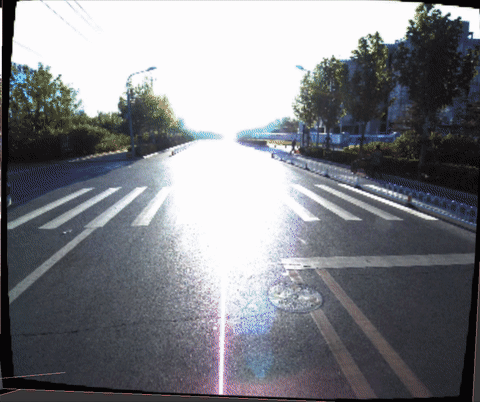3D reconstruction and Structure from Motion (SfM) are essential parts of many algorithms of today's research in Visual Odometry, SLAM and localization tasks. In this project, I've built the sparse 3D reconstruction from known poses implementing SfM pipeline with bundle adjustment optimization on C++ and used pure OpenGL for visualization.
More details available in the blog post https://capsulesbot.com/blog/2019/03/12/apolloscape-sfm.html
Previously, I've explored the Apolloscape dataset in the project for localization task via building Pytorch reader and training PoseNet to directly regress the car pose.
Build dependencies:
- Boost 1.59 Filesystem
- OpenCV 3.4
- Ceres Solver 1.14_04
- gflags 2.2.2
Build commands:
mkdir build
cd build
cmake ..
make
Quick test of visualization on stored tiny reconstruction of just 10 images:
# from ./build directory
./bin/3d_recon --restore=../results/sfm_out_sample.bin
Control Navigation:
W,A,S,D- move camera aroundZ,X- camera texture transparencyJ,K,L- change camera forward, backward, lateral0- return to the last camera (useful when you fly out and want to return)ESC- close visualizer and store SfM Map to a file
Download Apolloscape ZPark dataset from its official page and unpack it into a folder. Then symbolically link it to ./data/apolloscape from the project root directory:
ln -s <DATA FOLDER>/apolloscape ./data
ZPark sample dataset should appear in the path ./data/apolloscape/zpark-sample as a result.
The main file to run is ./bin/3d_recon from ./build folder. Here is an example to reconstruct only first sequence alone with the simultaneous 3D visualization:
./bin/3d_recon --records="1"
Or the full ZPark sample dataset for all 14 records without visualization (will take some time):
make && ./bin/3d_recon --records="1,2,3,4,6,7,8,9,10,11,12,13,14" \
--pairs_look_back=2 --matches_num_thresh=60 --matches_line_dist_thresh=10.0 \
--sfm_repr_error_thresh=10.0 --sfm_max_merge_dist=5.0 --noviz \
--output=sfm_out_all_r1_14.bin
Extracted features and matched pairs of keypoints with descriptors are stored in a cache folder ./build/_features_cache so subsequent runs that do not introduce new image pairs are using pre-calculated values stored earlier. Its speed up my tests iterations dramatically.
Cached featured and the final map serialization is implemented with Cereal. So the quickest way to see something is to restore the previous map. In the results folder there is sfm_out_sample.bin map that can be viewed without reconstruction step as:
cd build
./bin/3d_recon --restore=../results/sfm_out_sample.bin
